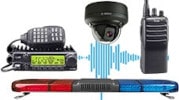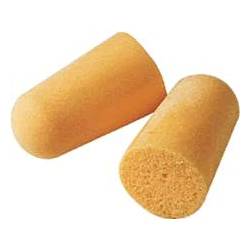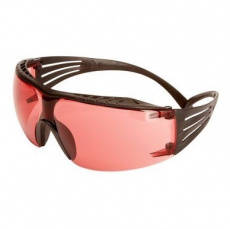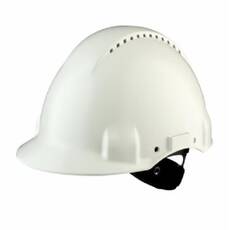- Special Offers
- Transceiver Radio
- Transceiver Accessory
- Antennas
- Antenna Accessory
- Cable
- Connector
- Installation Material
- Installation Tools
- Measuring Equipement
- Body Worn Camera
- Electrosmog
- Telephone
- Baby Monitor
- Fever Thermometer
- Radio Device
- Set-top Boxes
- Personal Protective Equipment
- Hearing Protection
- Eye protection
- Head Protection
- Motorcycle Helmet Speaker
- Car Equipment
- Voltage Converter
- Dry Cell
- Battery
- Battery Charger
- Emergency Signal
- Amber Signal
- Sound Signal
- Light and Sound Signal Accessory
- Traffic Engineering
- LED Lamp
- Smart Home
- Mosquito Repellent Device
- Market - Other Products
- Discontinued Products
Personal Protective Equipment
- further categories3M Peltor safety eye-wears, earplugs, hearing protection headsets and communication headsets represent world-class quality between two-way and active listening headsets for use in hazardous, noisy environments. A wide range of headsets and hearing protectors can be used in many noisy environments, such as shooting ranges or hunting while using weapons, next to noisy production lines, or in an airport at ground handling of an aircraft, but special headsets are also available for explosive environments. In addition to simple single- or reusable earplugs, shooting eye-wear for shooting or safety, passive hearing protection headphones, active headphones with electronic noise reduction, PMR446 or professional two-way radio-integrated hearing protection headsets, there are many products available in 3M Peltor product portfolio. 3M maintains a separate product line for children's hearing protection as well as for military use.
Why is hearing protection important?
The purpose of wearing hearing protection is to reduce noise exposure to at or below the permissible level so that warning sounds can still be heard. From an occupational health and safety point of view, noise exposure is divided into three groups according to the level of noise that occurs:
- lower action limit: daily noise exposure level (hearing protectors recommended): 80dB - 85dB (maximum instantaneous sound pressure level: 135dB - 137dB)
- upper action threshold: daily noise exposure level (mandatory use of hearing protectors): above 85dB (maximum instantaneous sound pressure level: above 137dB)
- noise exposure limit: average (type of hearing protector must be specified so that this limit is not exceeded even when used): 87dB (maximum instantaneous sound pressure level: above 137dB)
The daily noise exposure is determined by the average noise level measured during eight hours of work. The instantaneous sound pressure level is the maximum noise level at work. Noise measurements to check the noise exposure limit are regulated by Directive 2003/10/EC. Hearing protectors must be marked with the manufacturer, model name, EN number, instructions for use where appropriate, CE marking and recycling information in accordance with standard EN352.
Sustained noise levels of 80 dB are already in the hazardous range and can damage hearing. Exposure to high noise levels without adequate protection will lead to permanent hearing loss. Noise-induced hearing loss is irreversible, so prevention is very important. Noise exposure affects our body and our well-being through the effects of increased blood pressure, heart rate, mood changes and impaired concentration.
For example, if wearing a single hearing protector at work is not enough, we can combine them. 3M Peltor earplugs and hearing protection headsets are of world-class quality.
3M Peltor products include single or reusable earplugs; passive hearing protection headsets; active headsets with integrated electronic noise reduction; headsets with PMR466 or URH radio. The wide range is further extended by hearing protectors designed for children's hearing loss, and work protective equipment for military use.
On what basis should we choose hearing protectors?
If you work in a noisy environment, make sure you wear ear protection! Consider whether the noise is intermittent (pulsed) or continuous. When choosing the right hearing protection device, whether earplugs or ear muffs, it is important to be aware of the average noise level in the work area. Subtracting the SNR of the ear protection to be used from this value gives the acoustic pressure on the ears. For hearing and eye protection, it is also important to consider comfort aspects, such as how many hours a day you have to wear the protection and how comfortable and hygienic the chosen protection is. Always consider how much noise reduction you need. For example: average noise level in a factory environment is 100dB, this should be reduced to below the required 85 dB. In this case, a hearing protector with a minimum SNR of 15 dB will help.
We distinguish between passive and active hearing protectors. It is important to know that passive hearing protectors absorb all external noise, including speech. It has no built-in electronics to distinguish speech from other noises, which makes communication difficult. Active devices have built-in electronics that attenuate noise above 80 dB, as required by the standard. They ensure effective communication by not absorbing speech sound. Choosing the right hearing protection device can prevent accidents at work.
In our webshop you can find hearing protection products:
- Earplugs: We offer all-round earplugs; POD type preformed and banded earplugs. POD and POD earplugs are available in POD and POD earplugs with POD and POD eartips.
- Children's hearing protection earmuffs. Available in colour and with headband. Comfort is ensured by a wide sealing ring filled with a unique combination of liquid and foam.
- Hearing protection ears: The ears are filled with a unique combination of liquid and foam. Different model numbers mean increasing noise attenuation.
- Active hearing protection earmuffs: A hearing protection device specifically designed for sport shooting, hunting, military use. The soft, wide ear cushion reduces pressure around the ear. State-of-the-art noise-dependent technology provides excellent hearing protection.
- Bluetooth hearing protection earmuffs: Connected to a Bluetooth compatible device such as a mobile phone, they can help you work while protecting your hearing from external noise.
- Communication earmuffs: PMR446 walkie-talkie radios, Icom, Motorola, Hytera and other brands of professional two-way radios, EDR tetra radios, DECT phones can be connected to the communication earmuffs using a radio-specific adapter cable, sold separately. The basic package includes a universal connector. It is capable of high quality speech transmission even in noisy environments.




